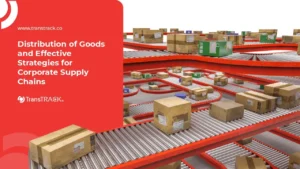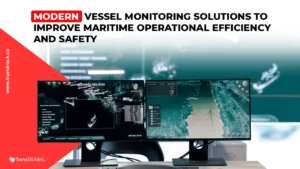Know the Types and Capacities of Wing Box Truck and Their Differences!
Posted on December 11, 2024 by Nur Wachda Mihmidati

In the rapidly evolving world of logistics, innovation continues to be the main driving force to improve efficiency and responsiveness. One of the latest breakthroughs that has caught the industry’s attention is the wing box truck. With a futuristic design that borrows elements from airplane wings, these trucks have become a symbol of advancement in cargo transportation.
Espousing a vision of more efficient logistics, the wing box truck is more than just a means of delivering goods. It is a combination of technological sophistication and aerodynamic aesthetics that could change the way we look at cargo transportation.
In this article TransTRACK , we will explore the uniqueness of wing box trucks, not only in terms of stunning design, but also in the context of improved operational efficiency. How can these trucks transcend conventional boundaries and take logistics to new heights of connectedness?
Let’s enter the world of wingbox trucks, where efficiency meets design, and elevate logistics to new heights!
What is a wing box truck
A wingbox truck is a type of cargo truck that has a special body design called a “wingbox.” Wing box is a term that refers to the shape of a truck body that resembles an airplane wing. This design usually has an aerodynamic shape to optimize fuel efficiency and truck performance.
The characteristics of a wing box truck involve a body that is wider at the top and narrower at the bottom, creating an appearance that resembles an airplane wing. This design can help reduce air resistance and improve fuel efficiency, especially when the truck is operating at high speeds on the highway.
Wing box trucks are typically used to transport large and light loads, such as light cargo that requires a larger volume of space than its weight. The main advantage of these trucks is their ability to carry large loads by optimizing cargo space and their aerodynamic efficiency.
It is important to note that the term “wingbox” may have variations in usage depending on the geographical region and the freight industry. But, in general, wingbox trucks refer to cargo trucks with a distinctive body design that resembles wings.
Types and capacities of wing box trucks
Wing box trucks come in various types and capacities to meet the needs of different types of transportation. Here is a brief explanation of the types of wingbox trucks mentioned:
Colt Diesel Double (CDD) Wingbox
- Type: The Colt Diesel Double (CDD) is a double cabin or cab over double type truck, which means the driver’s cabin is above the engine.
- Capacity: The capacity of this truck may vary depending on the model and specifications. The double cabin provides additional cabin space for more passengers or storage space.
Colt Diesel Engkel (CDE) Wingbox
- Type: The Colt Diesel Engkel (CDE) is a single cabin or cab over single truck, which means the driver’s cabin and engine are in one unit.
- Capacity: As with CDDs, the capacity of CDEs may vary depending on the model and configuration. Typically, crank trucks are more suitable for lighter loads than double trucks.
Wingbox Tronton
- Type: Tronton is the term used for trucks with three or more axes. A wingbox tronton has more axes compared to a truck-engine or truck-double, providing greater carrying capacity.
- Capacity: Wingbox trucks have significant carrying capacity as they can handle heavy loads and have good durability for long-distance use.
It should be noted that the exact capacity of such wing box trucks may vary depending on the individual specifications and configuration chosen by the truck manufacturer or owner. Further information on specific capacities and specifications can be found in the official documentation of the truck manufacturer or distributor.
Dimensions of wing box trucks
The dimensions of a wingbox truck may vary depending on the model, manufacturer, and specifications chosen. However, here are general estimates for wingbox truck dimensions:
Colt Diesel Double (CDD) Wingbox
- Length: Approximately 7 meters to 11 meters depending on model and configuration.
- Width: Generally between 2.3 meters to 2.5 meters.
- Height: Ranges from 2.8 meters to 3.5 meters, depending on model and load type.
Colt Diesel Engkel (CDE) Wingbox
- Length: Approximately 5 meters to 8 meters depending on model and configuration.
- Width: Generally between 2.3 meters to 2.5 meters.
- Height: Ranges from 2.8 meters to 3.2 meters, depending on model and load type.
Wingbox Tronton
- Length: Usually more than 9 meters and can exceed 12 meters depending on the model and specifications.
- Width: Generally between 2.3 meters to 2.6 meters.
- Height: Ranges from 2.8 meters to 3.5 meters, depending on model and load type.
These dimensions are general, and it should be noted that the exact dimensions may vary based on the truck design, wingbox body type, and additional specifications such as height from ground level to the top of the truck body. For more accurate information, it is recommended to refer to the manufacturer’s or distributor’s official documentation.
Difference between wingbox truck and wing box tronton
The difference between a wing box truck and a wingbox tronton lies in the category and capacity of the truck. Here is a brief explanation of the difference between the two:
Wingbox Truck
- Type: A wing box truck is a category of cargo truck that has a wingbox-shaped body or resembles an airplane wing. These trucks can fall under the truck-wingbox or truck-double category, depending on the number of axes.
- Capacity: The capacity of wing box trucks varies depending on the type and model. These trucks can be used to transport cargo that requires large space, but their capacity may not be as large as that of a tronton.
Wingbox Tronton
- Type: Tronton is the term used for trucks with three or more axes. A wingbox tronton has more axes compared to a truck-engine or truck-double.
- Capacity: A wing box tronton has a greater carrying capacity compared to a regular wingbox truck. They are designed to handle heavier loads and provide good durability for long-distance use.
Challenges in Using Wing Box Trucks
Although wing box trucks offer various advantages in terms of loading and unloading efficiency and distribution flexibility, there are a number of challenges that need to be considered in their use. These challenges include economic, technical, and operational aspects that can affect the efficiency and sustainability of using wing box trucks, especially for logistics and manufacturing industry players.
The following are some of the main challenges in the use of wing box trucks along with their impacts and potential solutions:
High Initial Investment Cost
Wing box trucks have a special design with a more complex opening and closing mechanism than conventional pickup trucks. Technologies such as hydraulic or pneumatic systems for opening the side wings increase production costs.
- Impact:
- The price of a wing box truck is higher than a regular pickup truck, requiring a larger initial investment.
- For small or medium-sized enterprises (SMEs), this cost can be a significant barrier to adopting wing box trucks.
- Potential Solution:
- Provision of financing or credit schemes for the purchase of wing box trucks.
- Option to rent a wing box truck instead of buying directly.
Relatively High Maintenance Cost
The wing opening and closing system of a wing box truck requires regular maintenance, especially on the hydraulic or pneumatic components, hinges, and box structure. Damage to these mechanisms can disrupt operations.
- Impact:
- Higher maintenance costs compared to regular trucks.
- Risk of downtime or delayed delivery if breakdowns occur.
- Potential Solution:
- Perform periodic maintenance according to the manufacturer’s standards.
- Using high-quality components to increase the durability of the opening and closing system.
Limited Access in Narrow Areas
Wing box trucks require a wide enough space on the side of the vehicle for the wings to open properly. This becomes a challenge when operating in areas with narrow access, such as urban roads or small warehouses.
- Impact:
- Difficulty in loading and unloading at locations that do not have sufficient space.
- Potential delays in distribution or damage to mechanisms if forced to work in confined areas.
- Potential Solution:
- Using wing box trucks with smaller dimensions for operation in tight areas.
- More careful planning of distribution routes to avoid areas with limited space.
Risk of Damage to the Wing Mechanism Due to Improper Use
The wing opening and closing mechanism, especially in hydraulic systems, is susceptible to damage if not operated properly or overused.
- Impact:
- High repair costs if major components are damaged.
- Decreased productivity due to vehicle downtime.
- Potential Solution:
- Train operators or drivers in operating the wing box truck mechanism according to standard procedures.
- Using durable and high-quality hydraulic components.
While wing box trucks have many benefits in the logistics world, challenges such as investment costs, maintenance, operational limitations in tight areas, and risk of mechanism failure require special attention. With careful planning, the use of quality technology, and regular maintenance, these challenges can be overcome to ensure the efficiency and sustainability of wing box truck operations.
Summary
- A wingbox truck is a general term for a cargo truck with a wingbox-shaped body, and it can include a truck-wingbox or a truck-double.
- A wingbox truck refers to a cargo truck with three or more axes and has a larger carrying capacity than a regular wingbox truck.
Both have a wing box design that can help improve aerodynamic efficiency and fuel efficiency, but wing box trucks can generally handle larger loads because they have more axes.
In an era of ever-evolving industries, logistics management is a key factor in ensuring a smooth supply chain. Wing box trucks, with their innovative design that resembles the wings of an airplane, have proven themselves to be an efficient solution for transporting large volumes of lightweight cargo. However, to achieve maximum efficiency levels, a holistic approach is required, and it’s time to integrate TransTRACK’s Truck Appointment System (TAS).
By combining efficient wing box trucks with TransTRACK’s Truck Appointment System, logistics companies can achieve optimal benefits in terms of operational efficiency, reliability, and speed. The higher the level of integration between wingbox trucks and TAS, the greater the potential to increase productivity and reduce operational costs.
Don’t miss the opportunity to improve your logistics management efficiency. TransTRACK’s TAS integration with wing box trucks not only helps you overcome current logistics management challenges, but also opens the door to a more efficient and sustainable future. Implement this system immediately to take the lead in the competitive and connected logistics era.
Recent Post
Topic :
Recommended Articles

 Bahasa Indonesia
Bahasa Indonesia








